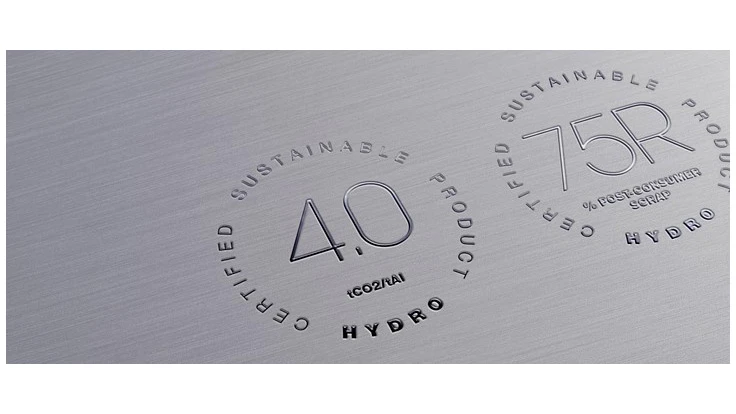
Global aluminum producer Hydro is offering two new aluminum alloys marketed as “certified low-carbon.” One of the two, known as 75R, will be made from at least 75 percent recycled aluminum.
The Norway-based company indicates the two new alloys have been designed to help customers reach their sustainability goals and meet market demand from climate-conscious consumers. The new products will be independently certified by Norway-based DNV GL.
“We are proud of our industry-leading climate strategy that has resulted in producing aluminum with the lowest energy consumption and the lowest emissions in the world, and our aim to become carbon-neutral from a life-cycle perspective by 2020,” says Svein Richard Brandtzæg, Hydro CEO. “As every part of our aluminum production is managed in-house, we can now take the next step by launching certified sustainable aluminum products.”
Hydro 75R is described by the company as aluminum with a guaranteed postconsumer recycled minimum content of 75 percent. The other alloy, Hydro 4.0, is defined by the company as hydropower-based aluminum having yielded a maximum of 4 kilograms (8.8 pounds) of CO2 per 1 kilogram (2.2 pounds) of aluminum. Primary aluminum production creates carbon emissions during the bauxite mining, alumina refining, electrolysis and casting stages.
“With the new low carbon certificates, we’re offering our customers a new set of tools to help them meet their own ambitious climate strategies, and together we can work to build a low carbon future for the broader industry,” says Hilde Merete Aasheim, head of Hydro’s Primary Metal business area.
Regarding the 75R Hydro product, Aasheim says, “Our aim is to make sure we maximize the sustainability benefits of a metal that brings carbon savings in the user phase and can be infinitely recycled with only five percent of the original energy needed.” She continues, “Our two new products address the sustainability challenge of our industry – making sure we meet the global demand for aluminum with metal that is produced with the lowest possible carbon footprint – and that we are there to bring it back into the loop.”
Latest from Recycling Today
- LumiCup offers single-use plastic alternative
- European project yields recycled-content ABS
- ICM to host colocated events in Shanghai
- Astera runs into NIMBY concerns in Colorado
- ReMA opposes European efforts seeking export restrictions for recyclables
- Fresh Perspective: Raj Bagaria
- Saica announces plans for second US site
- Update: Novelis produces first aluminum coil made fully from recycled end-of-life automotive scrap






